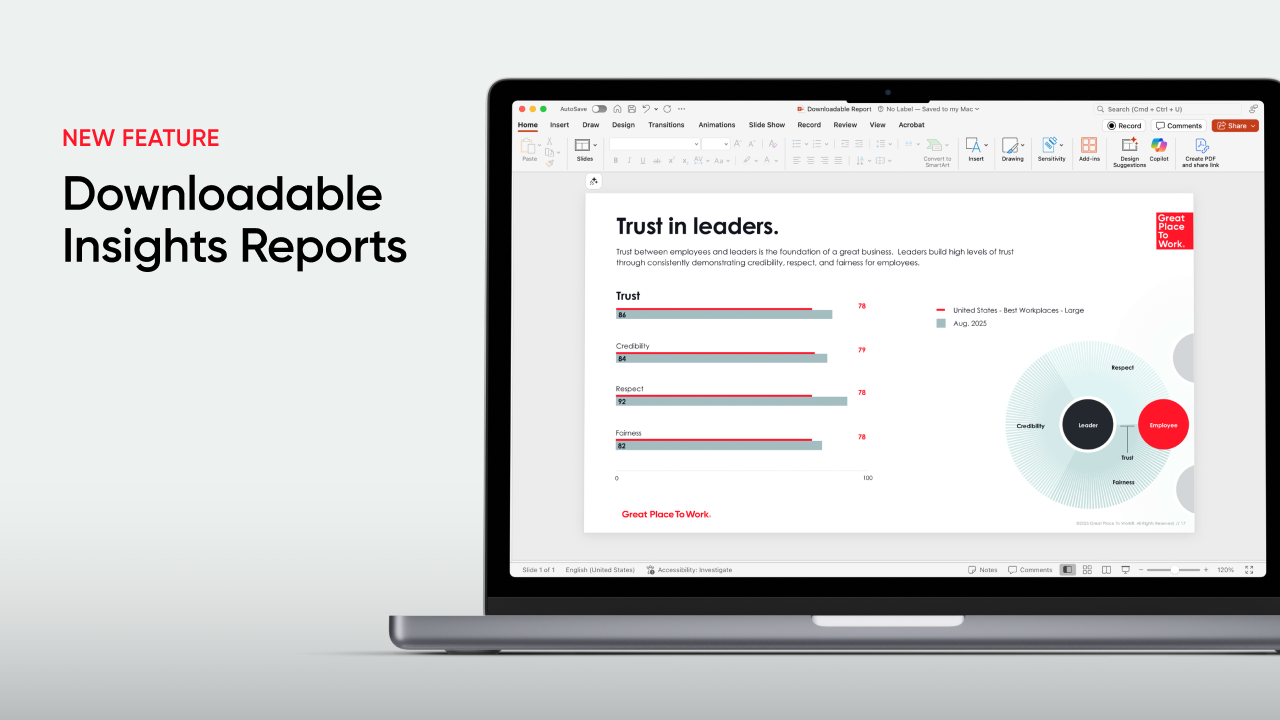AI (Artificial Intelligence), Employee Well-being
As technology revolutionizes the workplace, the argument for shorter workweeks gets much stronger, and more interesting.
Dismissing the 4-day workweek misses an increasingly interesting opportunity for business leaders.
New AI technology promises to change the conversation around changing the fundamental structure of work. More efficiency means that it becomes more possible to work fewer hours — but AI is also changing the value of the work done by human beings.
“When we think about productivity and human performance, the focus will be less on efficiency because we’re just not going to be able to compete with the machine on speed and volume,” says Joe O’Connor, CEO and co-founder of Work Time Revolution, and former CEO of 4 Day Week Global.
The rise of AI means human beings will have to compete on effectiveness — their ability to innovate, to be creative, to problem solve, and to make human connections. Those skills don’t fit neatly into a nine-to-five.
“We know that effectiveness is much more driven by how we manage our energy, our motivation, our well-being,” O’Connor says.
A 4-day workweek might also be a strategic play for companies struggling with AI adoption. O’Connor suggests offering something like a “time dividend” — the reward employees earn from exponentially increasing their productivity with AI tools.
“We’re seeing a lot of fear in the workforce about AI because of the very real concerns that they have that AI could displace their job roles,” O’Connor says. “There’s an opportunity for organizations to change the narrative and position AI as a win-win, where if you're able to accelerate your adoption of AI, you can share the benefit of that growth with workers.”
New research proves shorter weeks drive well-being
On the well-being front, it’s undeniable that less is more.
Wen Fan, associate professor and researcher at Boston College, and her colleagues published new research in Nature Human Behaviour about the impact of 4-day workweeks on 141 companies across six countries, including the U.S.
Over six months, the team tracked more than 2,800 employees and a control group of 300 people working a traditional five-day schedule. For workers with a 4-day workweek, 67% reported reduced levels of burnout, 41% said their mental health improved, and 38% experienced fewer issues with sleep.
The increase in well-being didn’t come with a cost for productivity or performance, either.
The study also monitored key business metrics like absenteeism, sick days, turnover and even revenue. None of those metrics showed deterioration, though Fan cautions that these signals were only monitored for six months.
To be considered for the study, companies had to meet two key requirements: “Pay has to be maintained at 100%,” Fan shared in an interview with Great Place To Work. “The second requirement is a genuine reduction in work hours.”
For most of the companies participating in the study, team members shifted from a 40-hour week to a 30-hour week. In self-assessments, employees said they felt even more productive than before, a win-win for employers and workers.
“This self-assessed productivity is one explanation for the well-being benefits because workers now view themselves as better workers,” Fan says. “They are more capable and more confident, which in turn improves their well-being.”
Common myths about the 4-day workweek
For leaders who are skeptical about the ability to implement a 4-day workweek in their organization, O’Connor aims to dispel some misconceptions.
1. Implementing a 4-day workweek means your company can’t stay open to the public
“In these major trials, the majority of organizations adopt some form of split shifts or rosters, or even emergency coverage to maintain service coverage across five days and in some cases even six or seven days,” O’Connor says.
2. The 4-day workweek is an inflexible solution that can’t be adapted
O’Connor says that an initiative around a shorter workweek is more of a strategic tool to help companies and employees eliminate a common enemy: unproductive busy work. “It’s not one-size-fits-all,” he explains. “It needs to be designed very thoughtfully and intentionally, based on organizational context.
Fan agrees. “We are not proposing that this is a model that could be automatically applied in every setting,” she says of her research.
3. You can adopt flexible work without fundamental changes in leadership behavior
One of the biggest barriers to adopting a 4-day workweek is a traditional “command and control” leadership style that conflates attendance or time spent with more meaningful measures of performance, O’Connor says.
To find success, leaders have to change.
Start by listening to employees
Why do companies decide to embrace the 4-day workweek? O’Connor says there are two common reasons: “Organizations do this because they’re looking for a lever to kind of change the game on productivity in their business, or they’re doing it as a talent play.”
Whatever your motivation, success will start by listening to employees and responding to their immediate needs and suggestions. O’Connor recommends launching a diagnostic audit, either with a consulting partner or internally, which accomplishes two key items: It sets expectations that the initiative is built on grassroots buy-in and that everyone is involved in the decision-making process.
“It’s just the reality that the people who are closest to the work are those that know where the inefficiencies and the bottlenecks and the gaps usually lie,” O’Connor says.
Turn culture insights into business wins
Let the Trust Index™ Survey reveal your workplace’s hidden strengths and areas for growth. Start transforming today.











